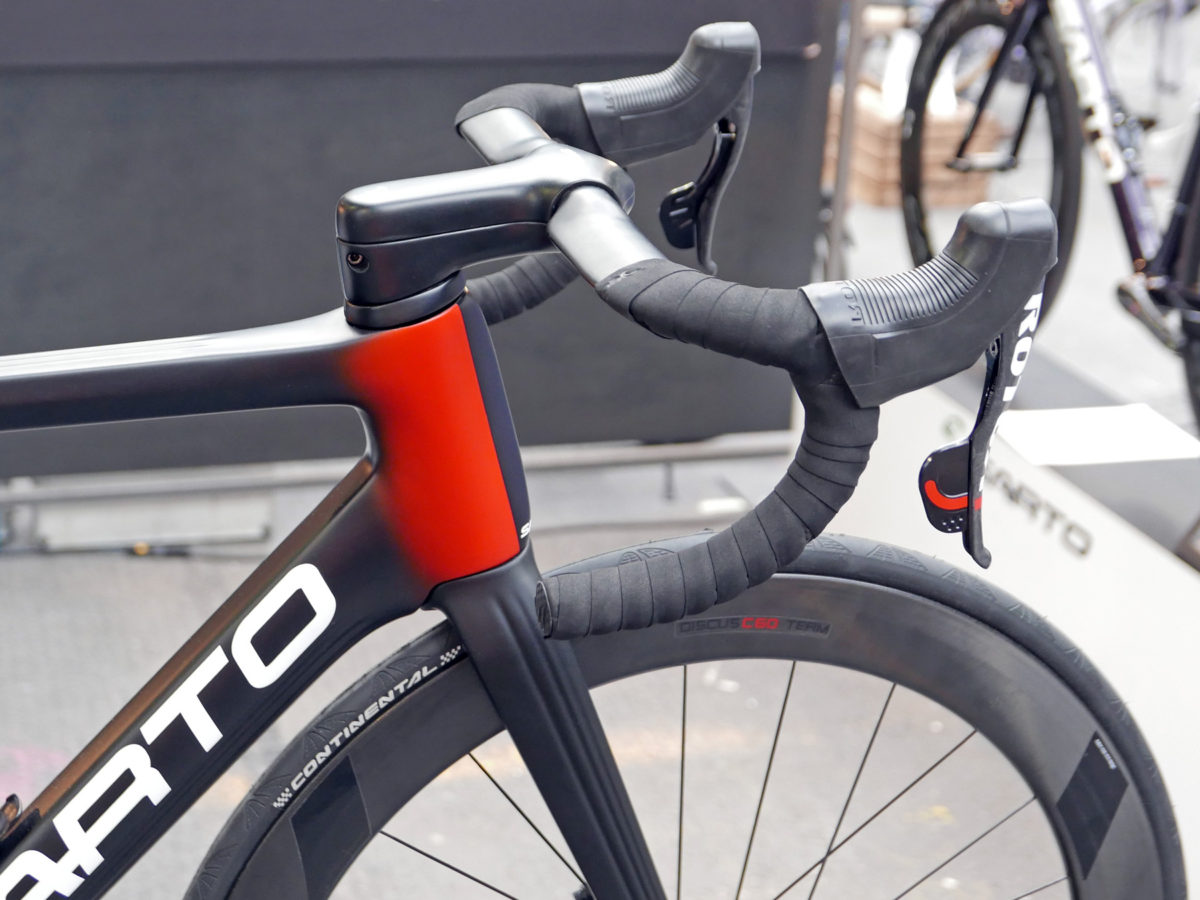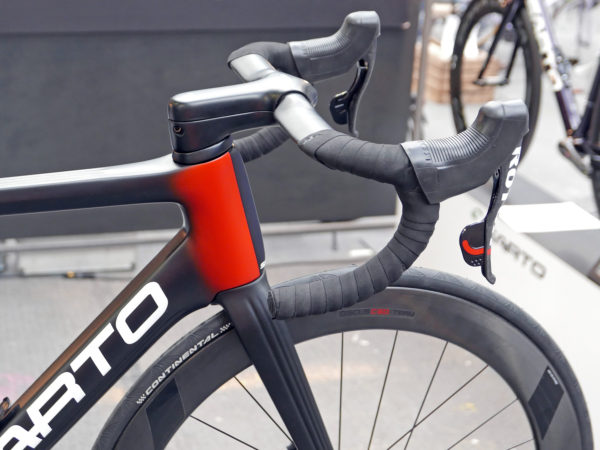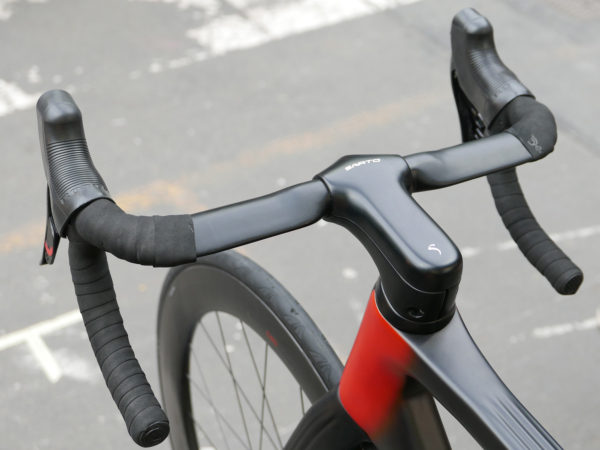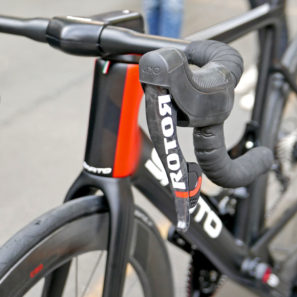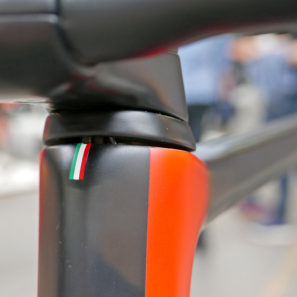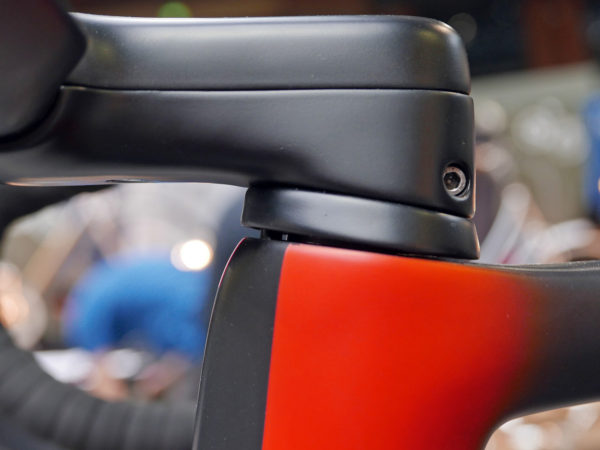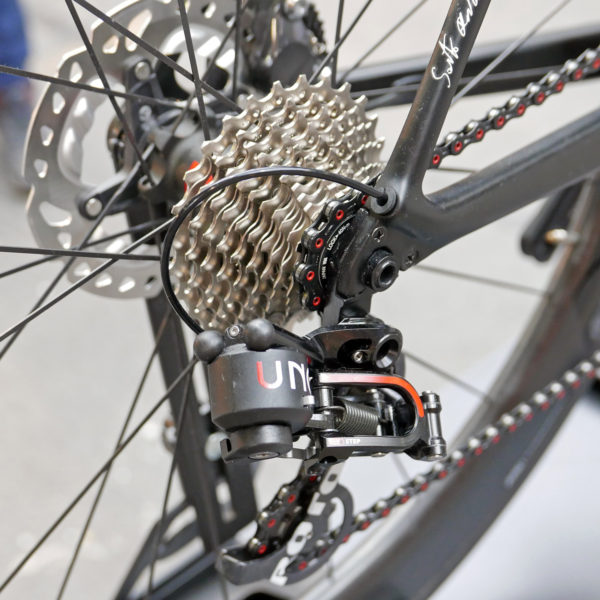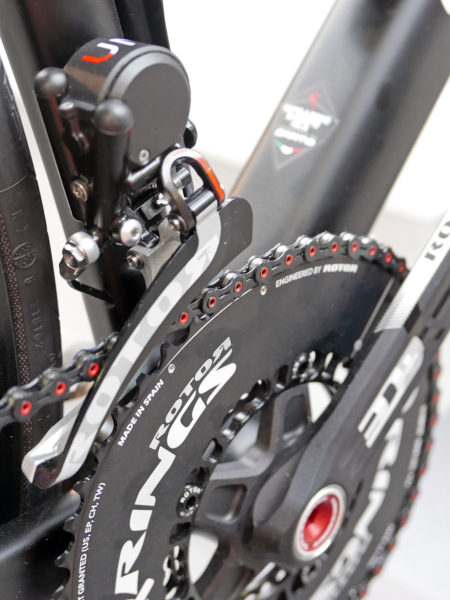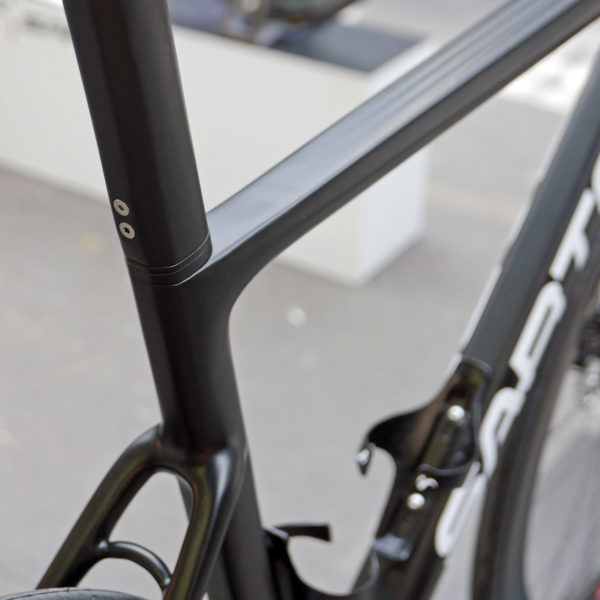Clean, custom solutions have been the hallmark of Italian carbon frame builder Sarto Antonio for as long as we can remember seeing them. But in Berlin this past weekend they pulled the cover back on a prototype version of their aero road Lampo that takes integrated design to new levels. Built up with the long-awaited, forthcoming hydraulic shifting, hydraulic disc brake Rotor Uno groupset, the bike gets completely internal routing from tip to tail, with hydraulic lines popping out just ahead of each brake caliper and derailleur. Take a closer look at how they do it after the jump…
Lampo Disc prototype
The base frameset for the integrated prototype is fittingly the fastest in their road line up – the aero Lampo. With dropped seatstays and boundary air-breaking ridges on both the frame and fork, the Lampo is already available in versions for direct mount rim brakes or flat mount discs. Even with that bike’s standard integrated bar/stem combo, internal routing and a hidden wedge-style seatpost clamp, Sarto thought they could do better.
To get more aero, Sarto actually dropped the one piece bar & stem for a slightly more conventional approach. Their solution is a two-piece stem that first bolts to the steerer tube, leaving openings from above to allow access to route the hydraulic lines. Thankfully, like electronic setups, Rotor’s UNO hydraulic shift lines can navigate pretty tight bends without any degradation of performance.
The stem then has a clamshell design, where the upper half fits over the top of the steerer tube extension and bar, clamping down to secure the handlebar with a single bolt from below and covering up the hydro lines routed inside the bar and then inside the stem.
(Note: Look closely at the gap between the headtube and the integrated headset cap/spacer and you can make out the 3 hydraulic lines just to the right of the Italian tricolor.)
Not surprisingly Sarto wasn’t interested in taking the stem off of this working prototype to show us how it worked, but they were happy to talk us through it. While it seems simple to get everything inside, steering becomes an issue. With electronic shifting it is simple enough to allow big enough holes inside to allow the steerer tube to rotate within the headtube without pinching the wire, but routing two hydro brake lines and two hydro shift lines is all together more complicated.
The front brake is simple – routed through the center of the steerer, it goes into the fork leg without having to worry about rotation.
The other 3 (which again you can see above) need to rotate with the stem and into the frame which doesn’t rotate. What Sarto did here was essentially build a double-walled headtube. In essence, the tapered steerer has a 1.125″ upper headset bearing that sits inside of the overall headtube width, and back almost 1cm from the front of the outer headtube. That way the 3 hydraulic lines stay outside of the steerer tube and headset (look closely, and you can see the small gap of light between the hydro lines and the headset above) and can freely rotate with the stem in the space between the outer surface of the frame’s headtube and the inner structural upper headset bearing support. Thus, the hydraulic lines have plenty of room to make the transition to being routed inside of the large downtube.
Out back those small hydraulic lines pop out just above each derailleur for simple routing and very little hose in the wind. On the non-driveside you get the same thing with the brake likes coming out inside of the fork leg and chainstay to transition smoothly to the brake calipers. We won’t focus too much on the fact that the Rotor levers appear connected to Shimano calipers and rotors. We’ve yet to see the Magura-developed Rotor Uno disc brake calipers in a flat mount configuration, and it seems that Sarto hasn’t been able to get a hold of a set yet either, so this bike is more of a proof-of-concept than something rideable.
On top of the internal routing design, Sarto are testing out a new seatpost design. The standard bike also uses a D-shaped aero post, but gets a hidden wedge-style post clamp accessed from the underside of the toptube. This bike had something more like a seatmast that rests on top of the seat cluster and is held in place by an internal expander. The rational here seems to be to provide a more stable base, resistant to slipping, with fine height adjustment available through the use of a variable height spacer stack.
The integrated internal hydraulic solution isn’t quite ready for production (you can’t just go out and buy the Rotor Uno group yet anyway, and we are waiting for an update on that one), but Sarto says that they are happy with the operation of the concept, and just need to work on it a bit more to refine it before it will be available.
Lampo
While the integrated disc brake prototype is an excellent show piece, the standard current version of the Lampo is no slouch either.
This orange and pale green rim brake Campagnolo EPS build is a fine example of the level of finish you get out of a custom carbon bike from the Italian workshop.
